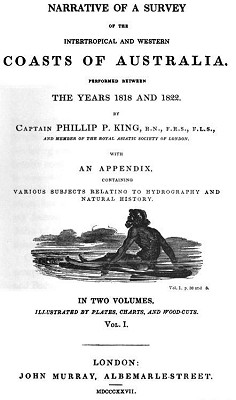
Captain Cook thus
describes the method by which the natives of
Endeavour River catch turtle:—" For striking turtle
they have a peg of wood, which ii about a foot long,
and very well bearded ; this fits
Page 226
into a socket, at the end of staff of light
wood, about as thick as a man's wrist, and about
seven or eight feet long: to the staff is tied
one end of a loose line about three or four
fathoms long, the other end of which a fastened to
the peg.
To strike the turtle, the peg is tied into the
socket, and when it has entered his body, and is
re-teincd shear by the barn, the staff dies ot aad
serves for a lost to trace their rictaa is the
water; it assist* sJso to tare him, taU they eaa
orcrtake bias with their caaoes aad baa! bin on
share. Ooe of these pegs, at I have astatiaacd
already, we found in the body of a turtle, which had
healed ap over it. Their iiaes are frao the
dark-aess af s half-inch rope to the finroess of a
hair, aad are made of »«me reretabk substance, bat
what in particular we bad no oppor¬tunity tn
learn." Hawanswos-rH« C«M. x\A. 5L p. f3S.
The above method differs oah (vara that used by
the natires af Rockingham Bay and Cape Flinders j in
that the imX is another piece of Sght buoyant
wood—the naff being retained in bis hand when the
turtle is struck. The reader will here recognise, in
UBS instrument, a striking reserabia: '-e t> the
ooaak and kmtteeitic, the weapon* which Captain
Parry describes the Esquimaux to use in spearing the
seal aad whale. (Pa RUT'S &ece*d Feygt
«/£K#co-eerjr, pp. 507 and 609.)
NNNNNNNNNNNNNNNN
, and is retained there by the barb, the staff ik$
of and serve* for a Soot to trace their vktim in the
water; it assists also to tire ban, till they can
overtake him with their canon sad haul MM m than.
One of these pegs, as I have mentioned already, we
found in the body of a turtle, which had healed up
over it. Their fines are Irons the thick¬ness of a
half-inch rope to the hxntm of a hair, and are made
of some vegetable substance, but what in particular
we had no oppor¬tunity to learn.''
HAWKESWORTH** CoS. vol tit. p. 332.
The above method differs only from that used by
the natives of Rockingham Bay and Cape flinders; in
that the float is another piece of light buoyant
wood—the laff being retained in his hand when the
turtle is struck.
The reader will here recognise, in hins instrument,
a striking resemblance to the amok and katlerlik,
the weapons which Captain Parry describes the
Esquimaux to use in spearing the seal and whale.
(PAEET a Second Voyage of Discovery, pp. 507 and
509.)







